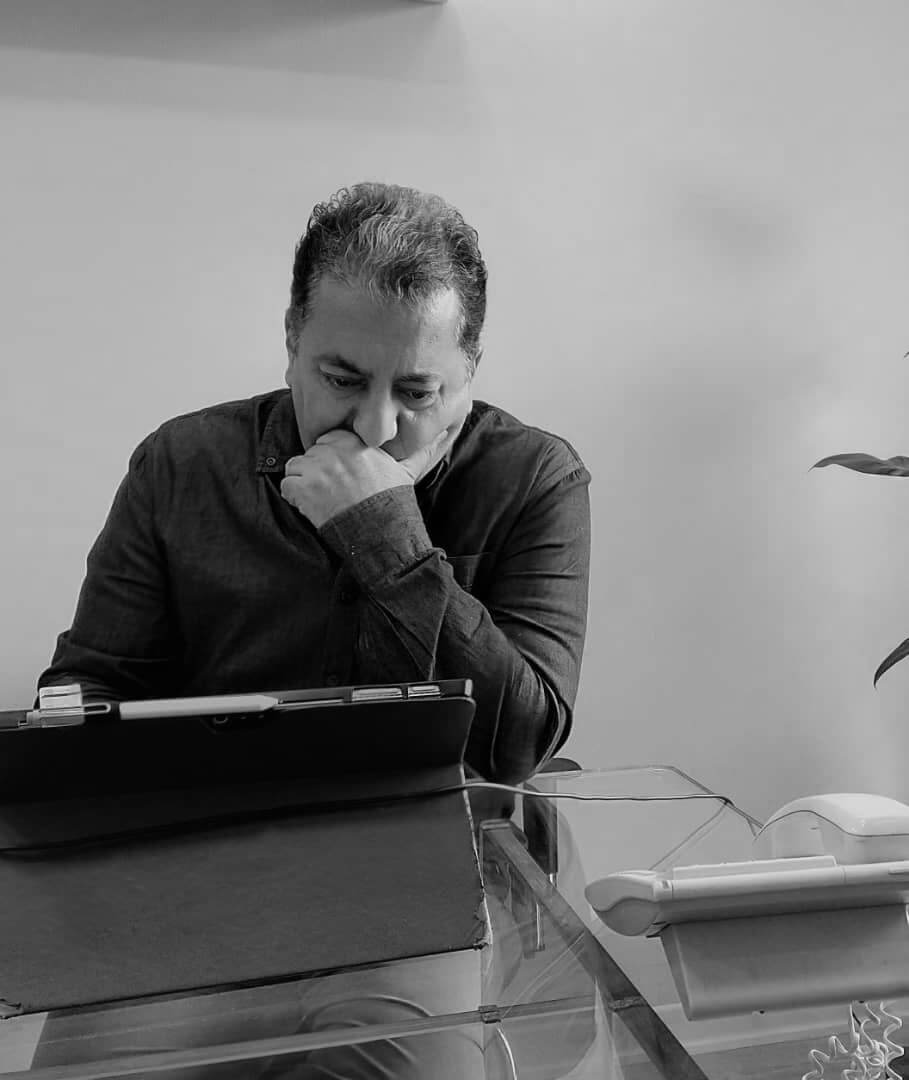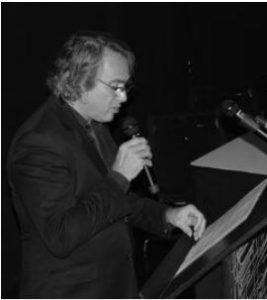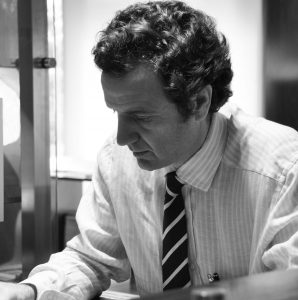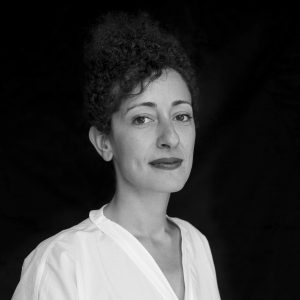Interaction Forum of 2ACAA 2018
A Forum for International Interaction and Exchanging Theories and Practices of Architecture in Asia – Oceania, Europe, Africa, South & Central America and North America
This forum is a social and lecture- based platform for sharing and discussing ideas about “Architecture, Culture, Social Evolution, Education, Social-ethics, Environmental- ethics, Observation learning, Innovative Contextual” when professionals from various continents to present their own views, style and approaches in 10 minutes.
This international event provide a unique opportunity for architects from all the continents to come together and share their experience and professional expertise And also to meet and exchange their architectural & cultural points for creating better living spaces in there respective continents.
The idea of 2A Continental Architectural Awards reveal differences in continental approaches and reflects challenges, and it also highlights the shared values that define high quality architecture, unity and diversity.
By doing so, 2A Magazine hoping to expand the horizons of architectural discourse.
How to Participate?
It would be our pleasure to receive the email from the side of Professional Participants in regards to The topic and abstract [with Max 200 words] of their architectural and urbanism research. [From May 1st to June 15th]
It will be considered and reply to them.
Totally 10 Professional ideas will be selected and they will invite to present at the event where the jury board judge them at the panel, First and Second Places will selected on the same day and they will receive their Certificates and the rest presenter will receive their Appreciation and Acknowledgment Letter at the final event of the award.
The email address: [email protected]
Note: The introduction of the speakers and abstract of their lectures will be published in the 2A Magazine and its website.
2A Interaction Forum Speaker 2018

Ahmad Zohadi
2A Magazine- Editor in Chief, CEO, Publisher
Introduction:
2A Magazine has added another event to 2ACAA award ceremony 2018, which is “Interaction Forum”.
This forum is a social and lecture- based platform for sharing and discussing ideas about architecture and the theme of the award is “Innovative Contextual Architecture”.
This Forum clearly illustrate that 2ACAA is an open forum where participants with various and different views, styles and approaches can be chosen as one of the winners of the award.
This shows that 2ACAA is not dogmatic in nature and it is open to all kinds of creative ideas. And having all these architects with various views beside one another will create a unique opportunity for them to interact and as a result create a social professional architectural community.
Note: The following lecturers are some of the candidates of 2ACAA 2018 who present in the interaction forum at IAAC, October 26th, 2018 at 10.0 to 14.0
The abstract of their presentation is published in the guide book of 2ACAA interaction forum 2018.

Willy Muller

Stephen Roe & Chiafang Wu
ROEWU Architecture – (UK)
Breathing Houses
Abstract: As energy becomes an increasing concern in architecture the design of many buildings is driven as much by their use of energy and how their forms can reduce that, as it is by more traditional concerns. Although architecture has traditionally been almost exclusively concerned with the shape and dimension of the visible, new developments in sustainability and building performance mean that architects must work more and more actively with the invisible energy-patterns of the environment.
This is demonstrated though a project for seven houses near Taipei in Taiwan. Air movement is encouraged through the form and configuration of the spaces both inside and around the houses. We will show how the houses are able to breathe, exchanging air with the surroundings, taking cool fresh air in from the forest to reduce energy use, increase comfort and reinforce connections to the natural world through their changing atmospheres.

Tracey Loontjens
ACBS Architects – (Belgium – China)
Contextual Architecture
Abstract:Understanding tradition in China, what does “Chinese” mean in modern architecture and urbanism and who does it serve?
Our work at Crossboundaries is to design for China. Designs that evolve from the richest understandings of China to meet the greatest desires of the end users that is channeled through the client’s vision. Our belief is to realize a modern architecture and urbanism that’s local to China, not a modern foreign import, we also understand this to be the want and pride of China and its inhabitants. Calibrating how to translate tradition to modern functions and aesthetics becomes an area of debate in the architecture and design industry here. The common representation of a “traditional China” in the modern context is often transplanted symbols from the past rather than a newly derived vocabulary. Further these elements often have been selected from particular periods in history, applied repeatedly as additions in new urbanism and architecture that then become the precedent in peoples sensibility to the understanding of “what is China”. Crossboundaries approach is to explore and abstract from historic and vernacular precedents, working to engage with our clients to evaluate the values they want to represent through the expression of Chinese tradition and how this language supports the users in that context of a modern intervention. In a visual presentation, we would share the current situation on Chinese design and how as a studio we go about challenging the pre-conceived notions.

Antoine Cosson & Barbara Sawczak
ACBS Architects – (France)

Pantea Eslami
ARSH 4D Studio – (Iran)
Archi[kid]’s Aims and Missions
Abstract:
Archi[kid]’s Aims and Missions: Architecture today is kind of confused moments, and architecture needs is to be linked with other arts, somehow to be inspired by other disciplines. There is an urgency that architecture needs to be inspired by the other arts and disciplines.
Back to our mission, Archi[kid] is an education and learning organization for children, whose aim is to promote creative thinking. The goal of Archi[kid] is to provide a platform to increase the sensitivity of children to their living spaces and surrounded environment in order to enhance their aesthetic vision.
We believe teaching children how to observe and understand the environment will boost their creativity and will prepare them to play an active role as citizens who can create better and sustainable future.
Based on our believes mentioned above, in Archi[kid] our medium is architecture, as it has been a language that we have been using through our career. The question is how to make our own craft as an Archi[curators] in a way to stimulate children’s sensitivity. Architecture is a multidisciplinary practice. However, we don’t want to foster the next generation of architects, but raising a child who can merge different kinds of disciplines together in a creative way is what we look for. As a matter of fact, our medium is architecture since we are architects!
Starting working with kids since our point of departure two years ago, we have been confronting many facts which were originated in shortage of kids’ educational systems. Since then we have been trying to build up Arch[kid] framework and structure in a way to respond to these issues. Encouraging our students to participate in the group conversation, getting familiarize with architectural design process while focusing on creativity and imagination and teamwork aspect of their work, deep observation, project base practices and many more tasks are examples of what we are looking for in Archi[kid].

Marcello Galliotto
A+M2A Architects – (Italy)
House in Milano Sesto
Abstract:We would like to talk about a project (a 3rd place of a huge international competition in Milan) which is the exact result of our approach to an Innovative Contextual Architecture.
– Where Innovative in not only a story of design, but it a story of city, new way of living for people and so on.
– Where Contextual means especially social thoughts vs urban design. – Where Architecture is a mix between culture/known and Technique.

Benjamin Iborra Wicksteed
MESURA – (Spain)
Live under a new shadow
Abstract:A new space beneath a vaulted ceiling gives life to this home located in Elche, in the surroundings of the town of Matola, with a damp and hot weather and an arid and brilliant landscape.
The work realized by MESURA Partners in Architecture does not only meet the order of projecting a big outdoors covered area for events, a new room and a multi-purpose area, it goes further.
From a reinterpretation of the traditional way of construction a clear and bold strategy is defined. An unique cover system that breaks the traditional hierarchy among interior and exterior spaces and has the ability to entrust the atmosphere, the light warmth and the comfort of each place to the quality of the ceramic walls, which work as filters, let us say as an interface with the user (as a protective and also texturized coat) and divide and organize the space.

Alejandro Bueso-Inchausti
BUESO-INCHAUSTI & REIN architects – (Spain)
Breathing Houses
Abstract:Inspired by the architectural concept by the architect and theorist American Louis H. Sullivan (1856- 1924): “Form even follows function”

Lina Ghotmeh
Lina Ghotmeh Architecture – (France)
Nature from Architecture
Abstract:‘Nature from Architecture’ – as in an archeological quest, every form reveals the hidden stories whispering in its environment. From the Museum to the Chair, memory shapes matter intertwining with the nature embedded in every new creation.

Chu Yang Keng
IX Architects Pte Ltd – (Singapore)
More Than Just A Library
Abstract:More Than Just a Library is a pro bono work conceptualized, designed and implemented by Singapore architecture firm, IX Architects Pte Ltd. We believe in empowering underprivileged communities through education. With our skill set and knowledge in building and construction, we seek to give back to the poorest regions in Cambodia starting from the construction of A Library. The library is low cost, low maintenance, scalable and can be replicable in other communities in the near future. The design of the library is made up of 3 cubes and designed to be flexible and adaptable to encourage different forms of learning. The library is constructed in materials that are sustainable and sourced locally.
The design intent of the library is a learning space designed to inspire the children of rural Cambodia. Nestled quietly on a primary school campus, students can use this library in all kinds of weather. Villagers had a part to play in fabricating the finishes for the library, thereby developing a sense of ownership amongst the overall community. This also celebrates the local handicraft culture.
Despite being in a pure cube form, the library embraces the entire site and complements other school activities. This activity space extends the learning space beyond the conventional classroom. The biggest gift lies in the integration of the library into the campus. The cubes sit on a raised slab that doubles as a function space as well as a performance space.

Gokhan Avcioglu
GAD Architecture – (Turkey)
Digital Architecture
Abstract:Digital Architecture today is an indefinite proposition under the influence of a multitude of social and technological realities. While in the 1990s it was possible to speak of computational design as a style, today the role of technology is such a central part of how architects work that we have to widen the conversation for Digital Architecture. Today when we engage a project we take into account technology in the programmatic, formal and material aspects of the design. Digital architecture for GAD is a matter of transforming important aspects of a project into information that we can process through computational techniques. This approach applies especially to the quantitative features of projects where we use the power of computation to derive a number of different models for example in our experiment with QR code for the Media City project. This repetitive use of digital tools can also be seen in our design using software and 3d printed models that allow us to numerous possibilities and their formal and structural opportunities, a method we employed in our Istanbul Technical Library design. This repetitive, iterative process is for us a central feature of Digital Architecture today. This approach combined with a larger understanding of technology as it touches important areas such as transportation, energy, agriculture and smart cities informs our 21st approach to Digital Architecture.

Sepideh Sanaei & Amin Ghasemi
IMA Design Group – (Iran)
New Generation of Design by Digital Fabrication
Abstract:Digital Fabrication is a series of processes that transform software sketches into material forms. The rapidly evolving field of digital fabrication, which was barely established a decade ago, is quickly altering the field of manufacturing. Digital fabrication is changing manufacturing practices in much the same way that the Internet streamlined information-based services. It will be explained to you in this lecture that how to use this system and have complete control on the project with drawing diagram.



